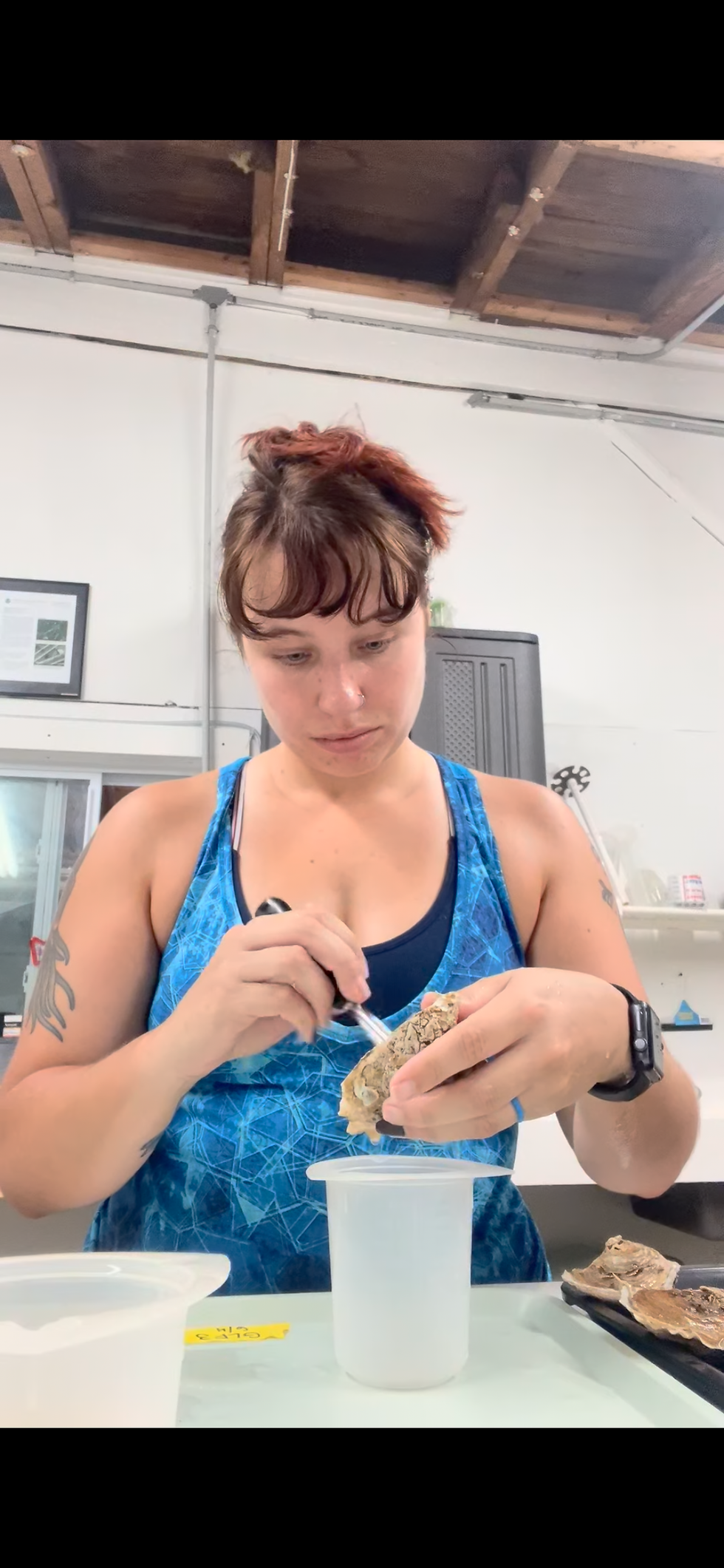"Under the Surface: Unraveling the Impact of Algal Oxylipins on Oyster Hatcheries" ECSGA Article
- Emily Allen
- Dec 16, 2024
- 3 min read
by Samantha Glover, M.S.Research and Development Director
Article for the East Coast Shellfish Growers Association
Recap: Oyster Larval Production Issues
In 2020, Mook Sea Farm in Maine began noticing significant issues with larval development, including delayed growth and feeding problems (evident by undigested algal cells), which led to poor production. Similar symptoms were observed again in 2021, 2023 and 2024, not only at Mook Sea Farm but also at other hatcheries along the East Coast. Bioassays conducted at Mook in 2020 established a link between these symptoms and the UV-treated water used for rearing larvae (see ECSGA Newsletter, October 2021, by Dr. Meredith White).
The current hypothesis suggests that UV sterilization may inadvertently increase concentrations of oxylipins in thewater. Oxylipins are oxidized forms of polyunsaturated fatty acids (PUFAs). PUFAs are released and enzymatically oxidized
by some phytoplankton, mainly diatoms,in response to stresses such as grazing by copepods (Pohnert, 2002). Some oxylipins are known to decrease copepod egg viability, leading to reproductive failure in copepods (Collins et al., 2018; Lauritano et al., 2016), and to halt sea urchin larval development (Miralto et al., 1999).
Our Experience
At Oyster Seed Holdings, we have encountered similar feeding and development issues with our larval cultures during different times of the year over the past few seasons. These problems have occurred despite the absence of visible water quality issues, algae culture problems or broodstock concerns. In early 2024, we observed feeding and growth difficulties in our larval cultures that coincided with
a bloom of Pseudo-nitzschia delicatissima, first noted in mid-January during sampling for the NOAA Aquaculture Phytoplankton Monitoring Program. This species of diatom has the potential to produce domoic acid, a toxin that causes amnesic shellfish poisoning (ASP) in humans and that can be fatal.
While this particular bloom was not producing domoic acid (based on testingby the Virginia Department of Health and the Virginia Institute of Marine Science), we hypothesized that using UV light to treat hatchery water during the bloomwas adversely affecting our larval cultures. This theory was informed by the bioassay data collected at Mook in 2020. After we stopped using UV-treated hatchery water, larval feeding and growth improved, despite the bloom persisting until mid-April. This supports the hypothesis that PUFAs are inadvertently being photo-oxidized to oxylipins in the UV treatment of hatchery water.

Ongoing Research
Currently, our hatchery is part of a NOAA Fisheries Saltonstall-Kennedy Program research project led by Dr. Juliette Smith’s lab at the Virginia Institute of Marine Science and Dr. Bethanie Edwards at the University of California, Berkeley. Over the past two hatchery seasons (2023–2024), we have collected various water samples to support analyses aimed at better understanding the types and concentrations of oxylipins during periods of poor larval performance, as well as during normal conditions. During the bloom period, we increased our sampling frequency to gather as much data as possible on the diatom species involved, the oxylipins being produced, and how their concentrations change over the course of the bloom. All of the collected samples are currently being analyzed, and our next steps will involve conducting bioassays and developing protocols to help hatcheries adapt to and manage oxylipin-related challenges when they arise.
Emphasizing the Importance of Industry Collaboration
The success of our industry depends heavily on access to reliable, high-quality seed. Hatcheries are vulnerable to environmental changes, and with the ongoing shifts in climate, new challenges will continue to emerge. As Mook Sea Farm highlightedin their previous article, it is essentialfor hatcheries to communicate openlywith one another and with researchersin order to develop effective solutions tothe environmental issues we face. Giventhe many unanswered questions aboutthe impact of oxylipins on larval oysters, collaboration and communication are key to strengthening our case and securing the funding needed to address these issues.




